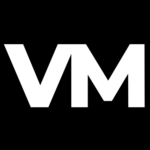Software-as-a-Service (SaaS) has transformed the way businesses operate, providing scalable, cloud-based solutions that are accessible from anywhere in the world. Developing a successful SaaS product requires a clear understanding of the development process and a focus on key lifecycle stages to ensure that the end product meets both user and business needs. This guide explores the SaaS product development process, breaking it down step-by-step, and highlighting essential best practices.
What is the SaaS Product Development Lifecycle?
The SaaS product development lifecycle is a structured approach to planning, building, launching, and maintaining a SaaS application. It involves several phases, each of which is crucial for delivering a successful software product that meets customer expectations. These stages include ideation, product design, development, testing, deployment, and maintenance. Implementing agile methodologies within the SaaS lifecycle ensures flexibility, better collaboration, and iterative improvements.
Key Phases of the SaaS Development Life Cycle
Let’s take a closer look at the stages of the SaaS product development lifecycle:
1. Ideation and Planning
The initial phase of the SaaS product development process is ideation and planning. During this stage, you define your product’s vision, identify target users, and establish clear business goals.
- Market Research: Understand the market needs, existing solutions, and competitive landscape.
- Problem Statement: Identify the problems your product aims to solve.
- Feature Prioritization: Create a roadmap that outlines the key features and functionalities of the product.
- Technology Stack Selection: Decide on the technology stack (e.g., programming languages, frameworks, and databases) that best supports your SaaS application.
Comprehensive planning is essential to ensure that the product addresses customer pain points and provides value. During this stage, creating a Minimum Viable Product (MVP) can help validate the concept before investing in full-scale development.
2. Product Design
The product design stage involves defining the user interface (UI) and user experience (UX) of the SaaS application. The design phase focuses on creating a seamless experience for users by making the application easy to navigate and visually appealing.
- Wireframes and Mockups: Design wireframes and mockups to visualize the application’s structure.
- UX Strategy: Plan the user journey to ensure that the application is intuitive and user-friendly.
- UI Design: Create a clean and attractive interface that aligns with the brand’s identity.
A strong design foundation sets the stage for an effective development phase, ensuring that the application’s look and feel meet user expectations.
3. Development
The development phase is where the actual coding of the application takes place. Using agile methodologies, developers build the product in iterative cycles, focusing on one module at a time.
- Backend and Frontend Development: Develop both the backend (server-side) and frontend (client-side) components of the application.
- Integration of Core Features: Implement core functionalities, including user authentication, data storage, and third-party integrations.
- Scalability Considerations: Build with scalability in mind to accommodate future growth and increased user demand.
During development, it’s critical to maintain clear communication among all stakeholders, including developers, designers, and project managers, to ensure alignment with the product vision.
4. Testing and Quality Assurance (QA)
Testing is a critical stage in the SaaS development lifecycle, ensuring that the product functions correctly and meets quality standards before it’s launched.
- Unit Testing: Test individual components to ensure they work as expected.
- Integration Testing: Verify that different modules of the application interact seamlessly.
- Usability Testing: Assess the user experience to identify potential pain points.
- Performance Testing: Test the application under various conditions to evaluate its performance, speed, and scalability.
Thorough testing helps identify bugs and optimize the application, ensuring a smooth user experience upon launch.
5. Deployment
Deployment is the process of releasing the SaaS application to the public. This phase involves deploying the product to a live server and making it accessible to users.
- Cloud Deployment: Choose a reliable cloud provider like AWS, Google Cloud, or Azure for hosting your SaaS application.
- Version Control: Implement version control to manage code updates and releases.
- Continuous Integration and Continuous Delivery (CI/CD): Use CI/CD pipelines to automate the deployment process, reducing the risk of errors.
Having a structured deployment plan in place ensures a smooth and successful launch.
6. Maintenance and Support
The SaaS product development process doesn’t end with deployment. Regular maintenance is essential for keeping the product up-to-date, fixing bugs, and introducing new features.
- Bug Fixes and Updates: Address any issues that arise post-launch and release updates to improve functionality.
- Performance Monitoring: Use monitoring tools to track the application’s performance, user activity, and server health.
- Customer Support: Provide customer support to address user queries and enhance the overall experience.
A strong maintenance strategy ensures that the application remains competitive and continues to provide value over time.
Agile Methodologies for SaaS Product Development
Implementing agile methodologies is crucial for SaaS development. Agile allows teams to work in short, iterative cycles called sprints, enabling continuous feedback, quick adjustments, and a focus on high-priority tasks. This approach is especially beneficial for SaaS applications, where the software is updated frequently to incorporate user feedback and changing market requirements.
- Iterative Development: Break down the project into smaller, manageable sprints.
- Daily Standups: Hold regular standup meetings to discuss progress and address roadblocks.
- Retrospectives: Conduct retrospectives after each sprint to review what went well and what could be improved.
Agile methodologies help maintain flexibility throughout the SaaS development lifecycle, ensuring that the product evolves based on real-world usage and feedback.
Cloud Solutions for DevOps in SaaS Development
Cloud solutions play a critical role in modern SaaS development life cycles. Using cloud platforms like AWS or Google Cloud for DevOps enables rapid deployment, easy scalability, and automated workflows. Cloud-based DevOps tools streamline CI/CD pipelines, automate testing, and facilitate real-time monitoring, making them essential for developing high-quality SaaS products.
Conclusion
The SaaS product development lifecycle is a comprehensive process that requires meticulous planning, agile development practices, and continuous maintenance. By focusing on the key stages—ideation, design, development, testing, deployment, and maintenance—businesses can build successful SaaS products that meet user needs and remain competitive in the market. Partnering with experienced providers like Kryoverse Innovations can further streamline the development process, ensuring that the end product aligns with the latest industry standards and technological trends.
A well-structured SaaS development process is crucial for delivering a product that not only meets business goals but also provides a seamless experience for end-users, making it a valuable asset for any organization.


